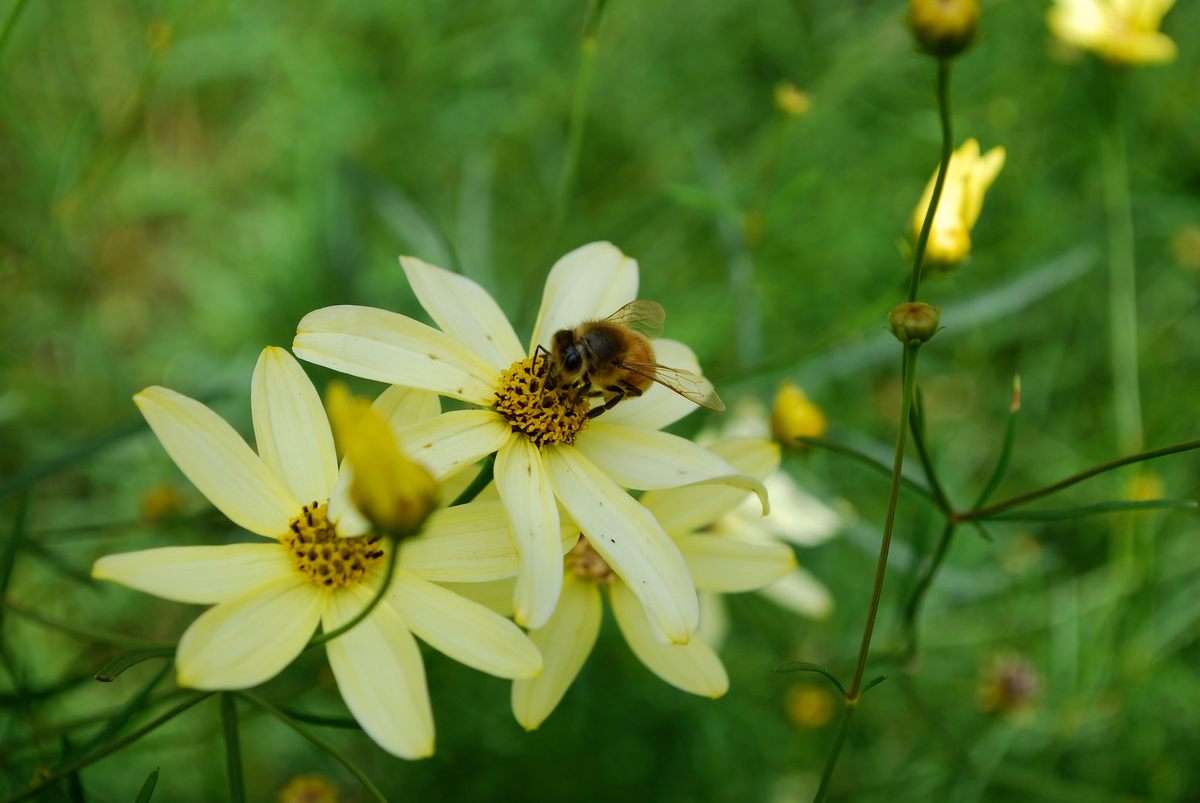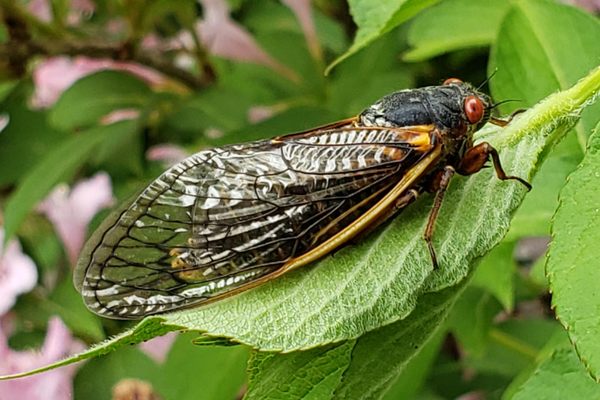This Is a Great Time to Busy Yourself With Bees
You can invite them over by planting some native plants on your deck or fire escape.
When Hollis Woodard picks up the phone on a Friday afternoon in the midst of the COVID-19 pandemic, she has to pry her hands from the dirt. “I’m working on the yard furiously to try and soothe myself,” she says. Woodard, an entomologist at the University of California, Riverside, studies bumble bees—a profession that sometimes pulls her to landscapes as lush and dreamy as a Bob Ross painting.
At a time when many people are instructed to shelter in place, meadow-traipsing can be hard to come by. But it’s an ideal time to bring the bees to you. “This is exactly the time of year when they start getting active,” Woodard says.
Bees perk up at the first signs of spring, typically responding to the appearance of flowers and cues that warmer weather or nourishing rainfall are on the horizon, or have already arrived. Across the 20,000 species of bees, winter habits vary pretty widely: Some so-called “solitary bees” spend the winter as pupae and blink into spring as adults. Meanwhile, “social bees,” including honeybees, have perennial colonies and simply stay cozy until it’s time to bust out. Bumble bee queens hunker down underground for the winter as plump, full-fledged adults; when the weather relents, they dig their way out and start flying—sometimes before the snow has even fully melted away. (In California, they gather at manzanita flowers that bloom in the winter.) “As soon as it’s a nice day,” Woodard says, “they fly out of their hives and go forage.”

If you don’t happen to live around a lot of green space or a field of wildflowers, you can still lure bees to your deck, windowsill, or fire escape. Even in the heart of a city, she adds, bees will show up (though they might not reach the top of towering high-rises). “If you’re sitting around, bored as hell—you’ve read all your books, sick of the internet—you could plant some things,” Woodard says. “Get a flowering plant that bees like and put it on a balcony or a window box, and it’s very much like, ‘If you build it, they will come.’”
In general, Woodard goes on, “the more things you plant, the more diversity you’ll see—you might see dozens of different types of bees showing up.” In California, nurseries are currently stocking bee-friendly poppies and blooming sages—but the best options will vary based on your location. The conservation-focused Xerces Society has regional lists of native plants that will be beguiling to bees across the country.
When bees do zip over to your window, you can log your findings on the citizen science project iNaturalist—or, if you’re in North America and you spot a bumble bee, you can post your observation to Bumble Bee Watch, a collaboration between The Xerces Society, the University of Ottawa, and several other partners. (In either case, try to get a clear photo of the little creature.) If you want to know more about what you’re looking at, Woodard recommends flying through The Bees in Your Backyard, a visual guide to thousands of species that live in the U.S. and Canada.
These long, uncertain afternoons at home are a nice chance to say hello to the apian neighbors, and to take a look at the world outside the window. “It’s a cool opportunity,” Woodard says. When we go back to being busy as bees, she adds, “people might be going through their day and not thinking so much about who comes to visit.”












Follow us on Twitter to get the latest on the world's hidden wonders.
Like us on Facebook to get the latest on the world's hidden wonders.
Follow us on Twitter Like us on Facebook